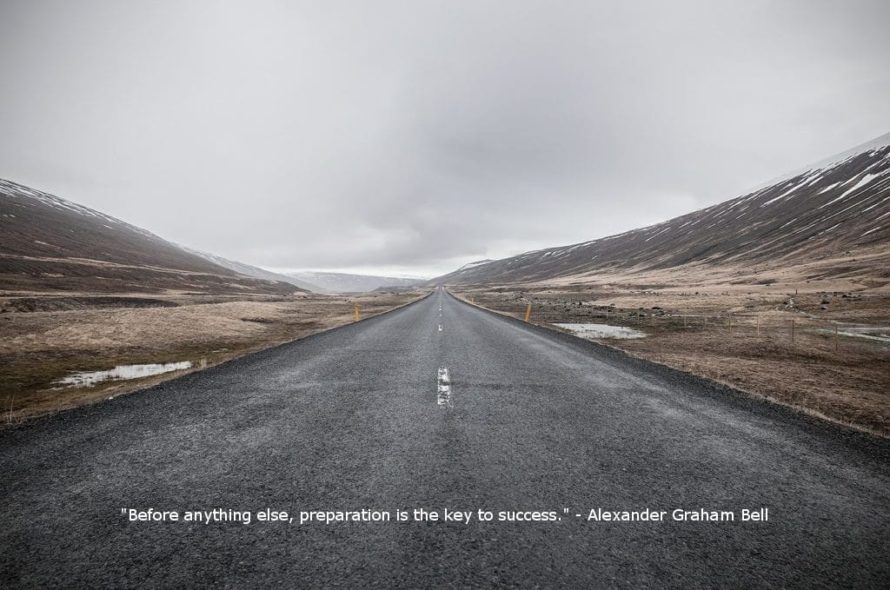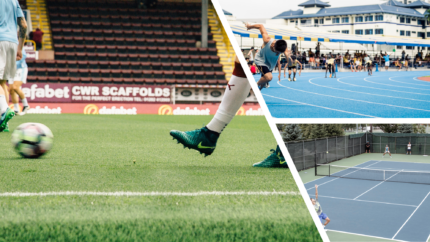In today’s post, I’m going to share with you a blueprint for the shaping factors for success in all things you undertake in sports, and in life.
With this blueprint, you can evaluate your current sports goals, and learn how to create better and more achievable ones.
Setting goals is the first step in creating the dynamic blueprint of a truly successful life. Goals are the coordinates that help build your map. Without them, you can get sidetracked and delayed indefinitely. The real difficulty with setting goals comes from the fact that not all goals are created equal. Having the wrong ones in place can get you in trouble.
The goals that we set for ourselves are products of our values and beliefs. To create worthy and achievable goals, there must be an objective process to separate the good goals from the imperfect ones.
It requires energy (the subconscious) to shape the factors of success. And this is where we embed Mediation. It is also important to understand that creating better goals comes with planning and having a holistic view of our goals. We do this to avoid conflicts in execution and our lives.
Factors for Success
Persons who create goals for themselves appear ready for change and success. However, if the goals are not reasonable, or if they are ill-formed, they may end up creating more problems that require even more time, energy and resources to solve. To avoid this scenario, use the following Guide to Creating Better Goals.
- Step #0: Have I checked for any biases?
- Step #1: Have I ascertained the intent of my goal? Do I have a why?
- Step #2: Is my why sound? Is my goal something I should be involved in?
- Step #3: Have I identified the ways through which to execute on my why?
- Step #4: Do I know the exact context of my goal?
- Step #5: Can I model others? Are there analogies to my goal?
- Step #6: How does the pattern I have identified compare with other models?
- Step #7: Am I ready to start?
- Step #8: Can I visualize the end in mind?
- Step #9: Do I have all the information and “technical” details?
- Step #10: Do I believe I can do it?
You must objectively examine each of your goals and plan their execution appropriately.
Step #0. Have I checked for any biases?
It is important to remove all your preconceived beliefs or limitations. Do not consider material things – money, equipment, help, time, before formulating your goal. When you start with a “clean slate” you have a better chance of allowing your subconscious to help guide you in creating better goals.
Step #1: Have I ascertained the intent of my goal? Do I have a why?
A good goal should always state your intent positively:
- Permanently lose 30 pounds in three months
- Find a better-paying job in a great company without leaving the state
- Learn a new musical instrument
- Play with my band professionally in a year
Goals that are stated in the positive help condition your mind in seeking out solutions that will then be used to surmount the challenges surrounding the goals.
However, why do you want to “permanently lose 30 pounds in three months?” If in your mind (consciousness) your why is “to look good in my clothes”, but it is “please my partner”, it is the latter that will be acted upon by your subconscious. Your goal can only have one “why.” All others must be secondary.
Step #2: Is my why sound? Is my goal something I should be involved in?
Some goals like losing weight or quitting alcohol are sometimes difficult and contingent on other people. If your doctor tells you that before embarking on a plan to “permanently lose 30 pounds in three months” you need to lose at least 5 pounds to lower your blood pressure, will you continue?
Even more importantly, does your goal support your other life goals?
Step #3: Have I identified the ways through which to execute on my why?
Now that you have settled on your “why”, and are convinced to go forward, you must now identify the ways in which you will execute. Some activities will require energetic action – like getting up every day before dawn and working out for an hour. Some activities will require more influential action – like persuading your partner to join you. It is important that you look at all the ways in which you will have to achieve your goal. First, organize them in order of priority. Then classify them in order based on polarity: energetic versus persuasive.
Step #4: Do I know the exact context of my goal?
A goal worth chasing is a goal that is clearly defined to begin with. Like writing a news story, you need to ask yourself the Five W’s and One H (Who, What, Where, When, Why and How).
Once you have established the realistic context of your goal, you can move forward confidently with full knowledge that you have the underlying structure that will guide you to completion.
Step #5: Can I model others? Are there analogies to my goal?
Are there others, friends, celebrities, everyday people who have successfully undertaking and achieved my “why?” This is where you can turn to meditation, science, biographies for the best sources of analogies, especially if your goal is regarding modifying behavior. Through this process of synthesis, you will have identified a similar pattern for achieving your goal.
Step #6: How does the pattern I have identified compare with other models?
Now you must analyze what is different between the pattern for your “why”, what the science says, and the models of others who have achieved this same goal. Did they have the same why? Is my why sufficient for success? Did they have similar obstacles? What circumstances were different? Your objective is to arrive at the abstract difference in your undertaking.
Step #7: Am I ready to start?
A simple question, but the answer will reveal your commitment and readiness to run your project, and not let it run you. It is very easy in today’s world to become emotional, to abandon sound principles and your plans. This is where meditation, deep meditation, affirmations, the things that help you stay focus, become very important. You must use your will (consciousness) to remain “mindful” as the great sages would say.
Step #8: Can I visualize the end in mind?
Your goal appears sound, so too your “why.” You have a pattern and you understand the difference in the work you may have to do. Now you must envision your goal. You must “start with the end in mind.” You must be able to visualize and document the various phases (key milestones) of the project that will deliver your goal.
But you must bear in mind, this is not where you start planning like most people do.
Step #9: Do I have all the information and “technical” details?
All projects, and achieving your goal classifies as a project, require resources to be accomplished. If you have no idea as to what type of resources you will need to start achieving a goal, then you can’t move forward with it.
If you’re looking to “permanently lose 30 pounds in three months” for example, do you have a diet plan? Do you know have the information to create the plan? Will you seek the help of a dietician? Who is the best? Do I have to research and create my own? How will I know it works?
You don’t have to have the answer to every single detail at this point. What is important is the you seek all the information and technical details regarding every step and the means of getting to your first milestone you identified in Question #8.
Step #10: Do I believe I can do it?
You must believe that you can produce the resources needed. You must act like you already have them! Remember your “why” and start from a “clean slate.”
You have a clear plan and schedule on how you will begin your project and reach that first milestone. What this question asks forces you to do is look deep within yourself. Your ‘why’ must be congruent with your goals. If they are not, and you have not sought to understand what like in your subconscious, then failure lies ahead.
You should pause. It is through meditation, meeting our subconscious mind, that we raise our consciousness. This idea of “mindfulness” and the use of the personal will to affect physical change is meditation.
Now, you can either abandon your goal completely, or return to Question #3 and reformulate your goal.
Act!
Having fully prepared yourself for the undertaking, you are now ready to begin the physical work of creating your success and reaching your goal!
You may use this formula to analyze a subject or series of events, plan an event, accomplish a goal. But this you must keep in mind. You need to find the “why” of your activity to begin creating better goals. If not, you will never understand them. You will never understand where they fit in your life.


